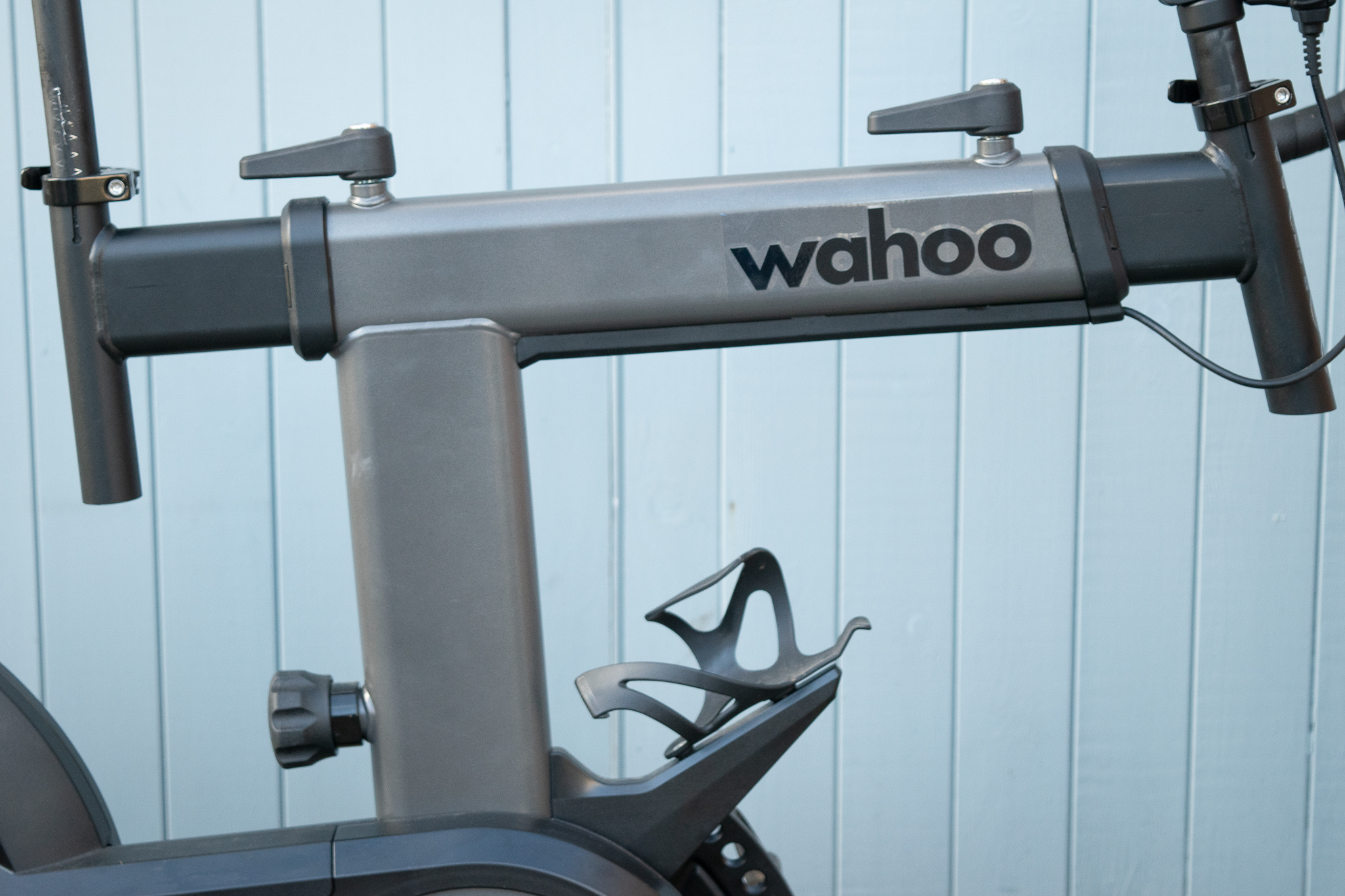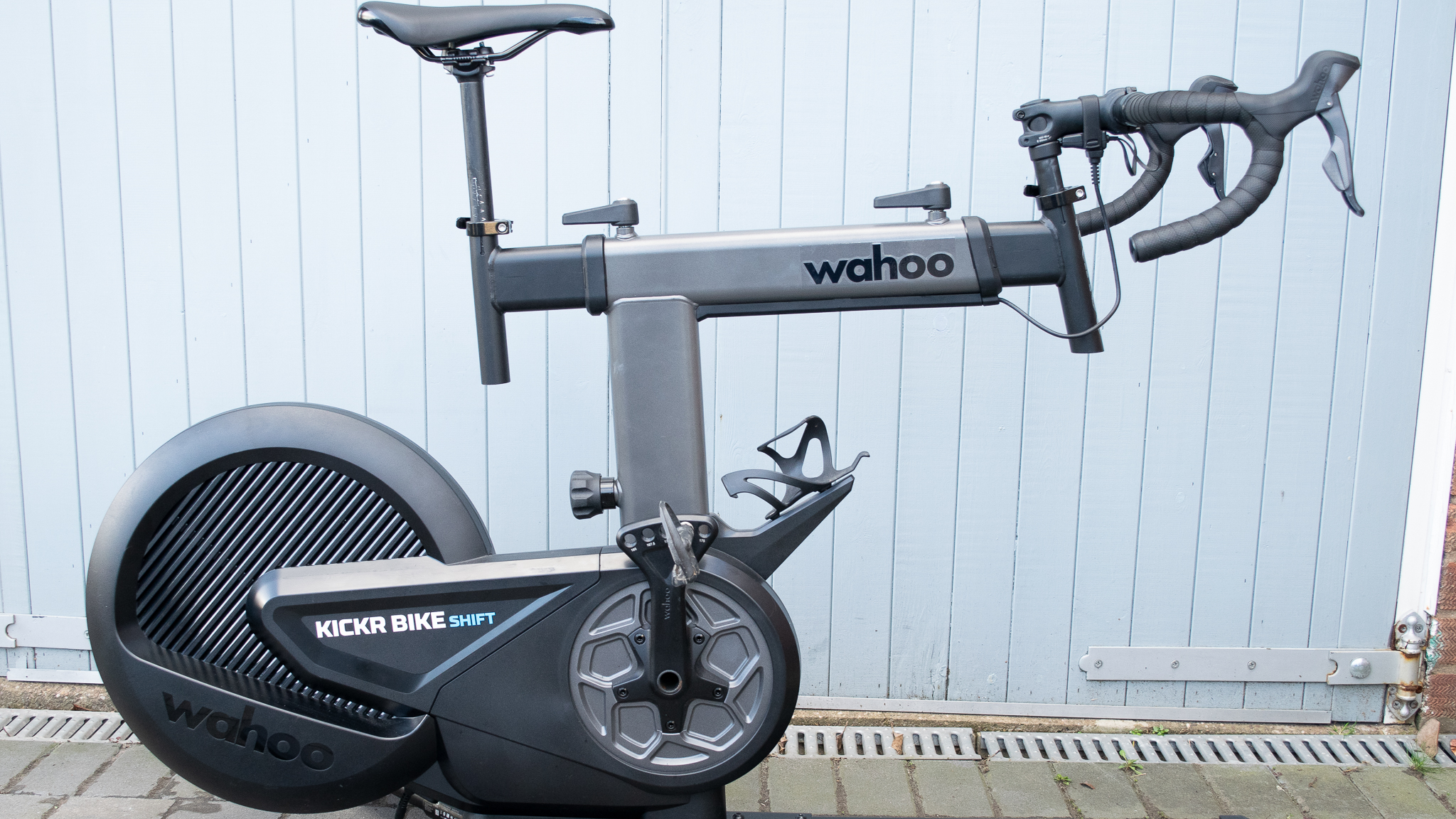
Price: £2,699 / $2,999 / €2,999
Weight: 36kg
Drivetrain: Belt drive
Power Accuracy: + / - 1%
Connectivity: ANT+, ANT+ FE-C, WiFi, Bluetooth, Direct Connect
The Kickr Bike Shift indoor smart bike was launched in September last year, along with the flagship Kickr Move trainer. The Kickr Bike Shift (I'm just going to call it the Kickr Shift from hereon) slots into the range as a second-tier smart bike, sitting beneath the top-tier Kickr Bike.
The Kickr Shift is a hugely adjustable smart bike which uses an enclosed belt drive system and requires zero power calibrations. Despite being a new more affordable alternative from Wahoo, it's still a premium purchase and the the Kickr Shift, like most of the best exercise bikes, is several hundred pounds/dollars more expensive than the best smart trainers. A smart exercise bike to train on and ride indoors may well be on your shopping list though if you are interested in a capable, good-looking, indoor solution and don't want to have to install your bike on a trainer each time you ride, and have the cash of course.
The Kickr Shift is £800 cheaper than the top-spec Wahoo Kickr Bike but still carries an RRP of £2,700 / $2,999, though a year Zwift subscription is included in the price.
The Kickr Shift doesn't have the real-time physical gradient change tech the Kickr Bike has, in simple language the top-flight Kickr Bike will physically tilt back and forth to replicate gradient differences. The Kickr Shift also has a different belt-driven drivetrain to the Kickr Bike which features a motor-driven electromagnetic resistance.
At £2,700 the Kickr Shift sits alongside competitor offerings like the Stages SB20 bike and Tacx Neo Smart Bike trainer. I've been putting in the hours on the Kickr Shift since it launched to see how it is to live with long-term.
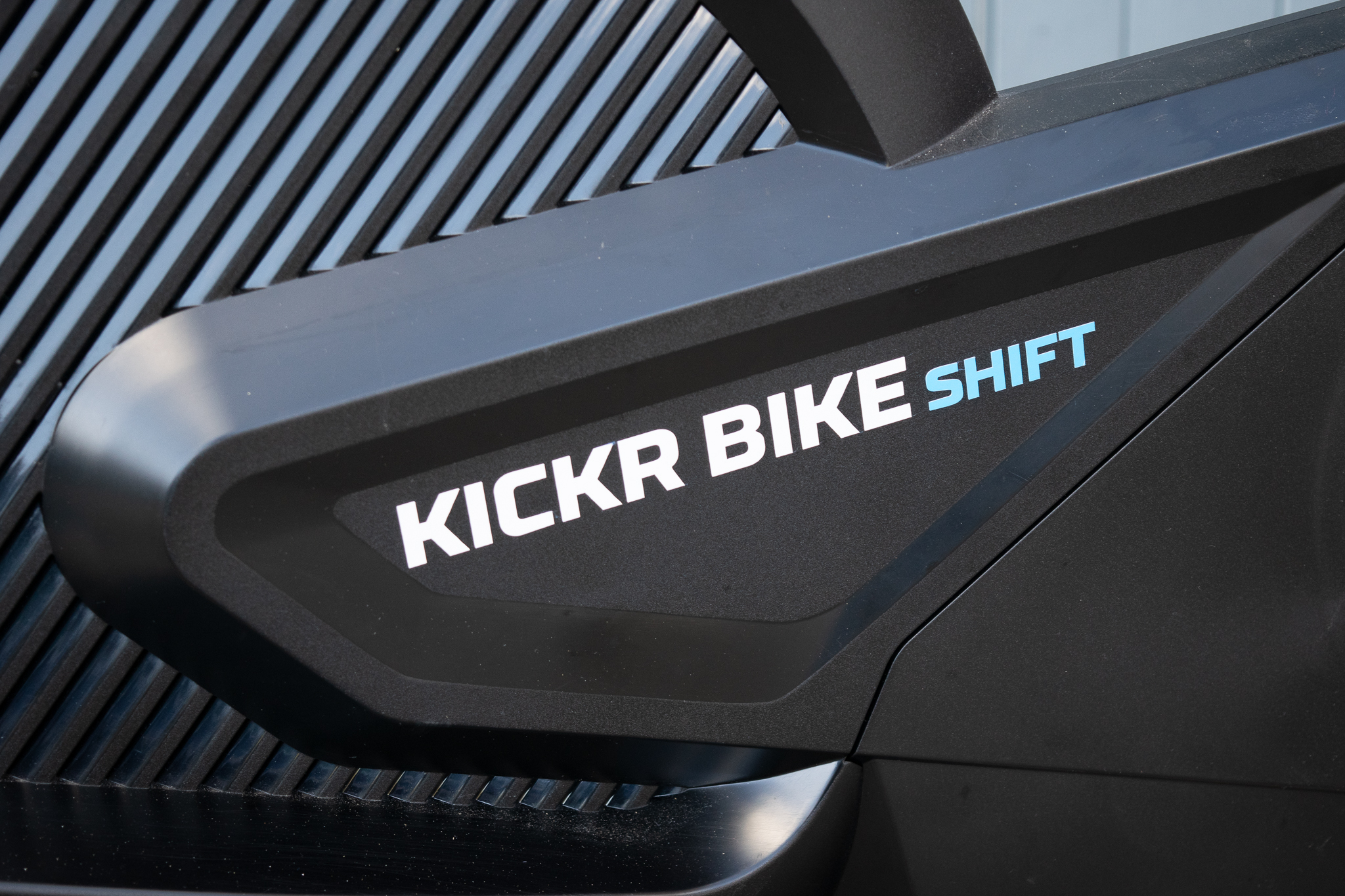
Design and Specifications
The Wahoo website instructions say the Kickr Shift setup requires two people, though I managed it just fine solo, it was simple and easy to work out.
The bike comes in a large box. You can start by laying the box on its side and working out of it until it's time to lift the bike out. All you need to do is bolt the trainer's legs on with a 5mm hex key which is included, and torque to 25Nm if you have a torque wrench. Drop the seatpost and saddle into the frame, install the handlebars and stem, set the bar roll, attach your pedals and you're away.
Once the bike itself is together, all that's left to do is plug into the mains and connect the magnetic head control unit pod which sits just underneath the handlebar stem and has LED's to show Bluetooth and Wifi connections.
The bike itself is pretty easy on the eye and looks modern and purposeful. It's all blacks and greys except for the 'Shift' part of the logo which is finished in Wahoo blue. If the bike was set up on display in your house somewhere it wouldn't be an eyesore and would probably make a solid conversation starter.
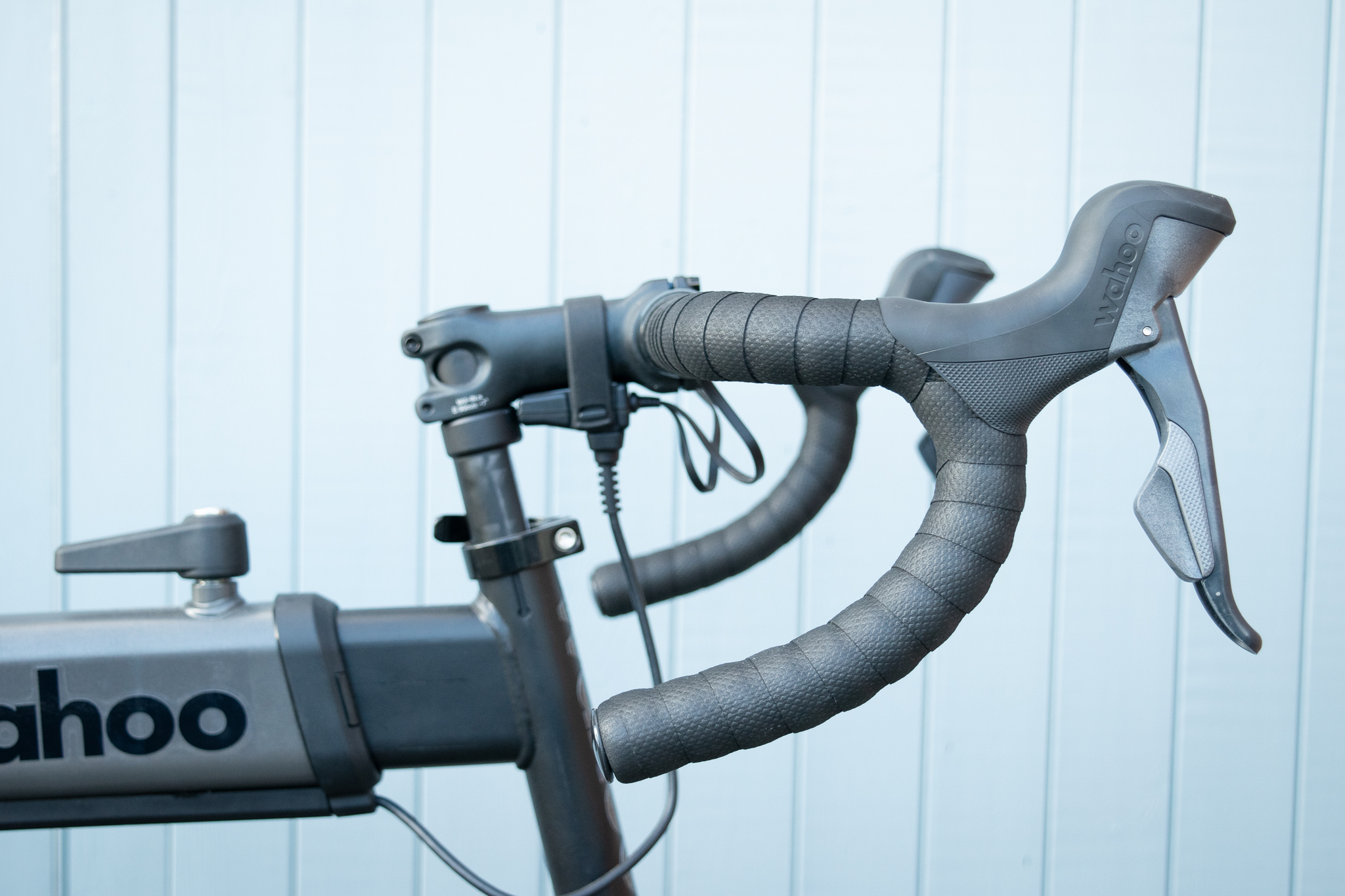
Tech specs-wise, the Kickr Shift has a max rider weight limit of 113kg and a user height range of 152cm to 193cm which should cater for a good range of riders.
It uses an enclosed belt drive system, and the belt itself is a Gates unit. Resistance is provided by a flywheel and electronic brake system. Incidentally, the bike's shifters do allow you to brake during rides.
Power accuracy is quoted as +/-1% and the maximum resistance is 2,200 watts. That's more than enough for most cyclists, and if you are cracking 2,000 watts, all power to you, literally, but you won't be doing it for long. The maximum virtual gradient simulation is 20% and the minimum is -15%.
The Kickr Shift is also compatible with ANT+, ANT+ FE-C, WiFi, Bluetooth and Direct Connect tech and will work with macOS, iOS 16 or newer and Android 10+.
Wahoo accessories are of course compatible with the Shift bike the same as with other trainers and bikes in the brand's range. I used the Kickr Headwind fan and trainer mat with the Shift bike and the fan paired and integrated seamlessly with the app etc. There is a single bottle cage on the bike but no phone or tablet mount points or holders are included which would be handy.
The Wahoo app takes care of pretty much everything and you can customise your rider metrics, find workouts, and carry out firmware updates using it. Finally, the Kickr Shift comes with a one-year Wahoo warranty.
Performance
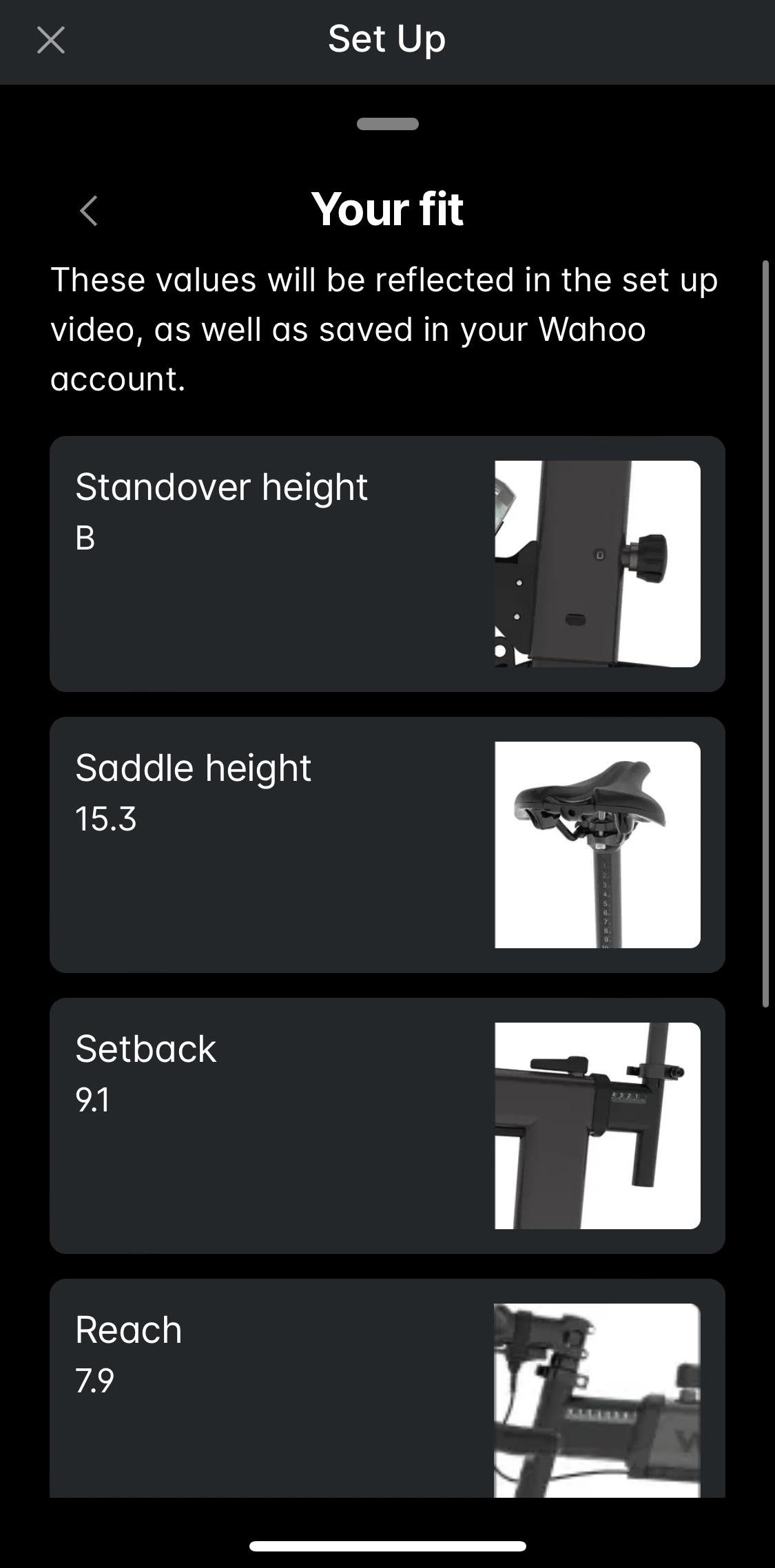
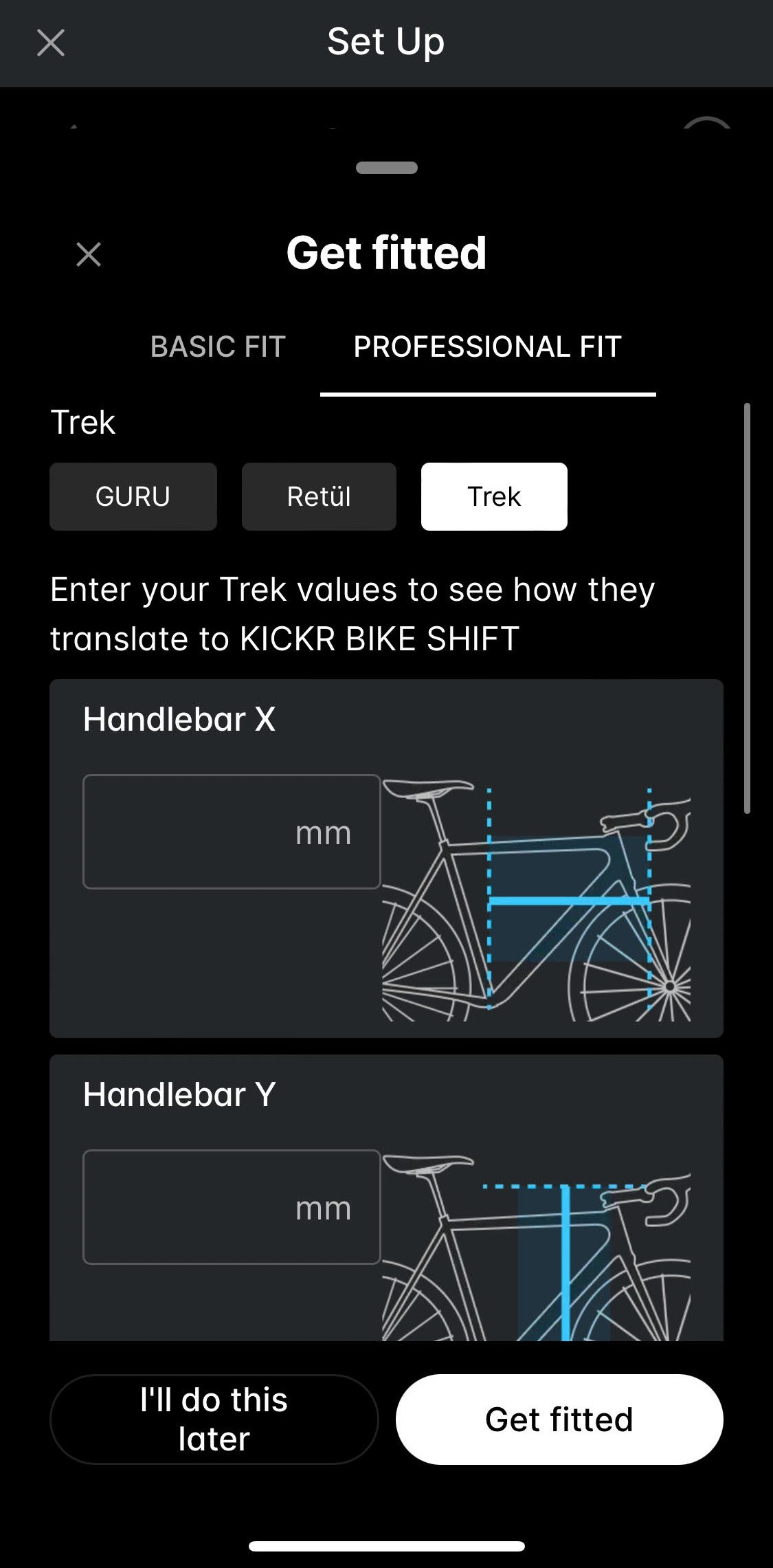
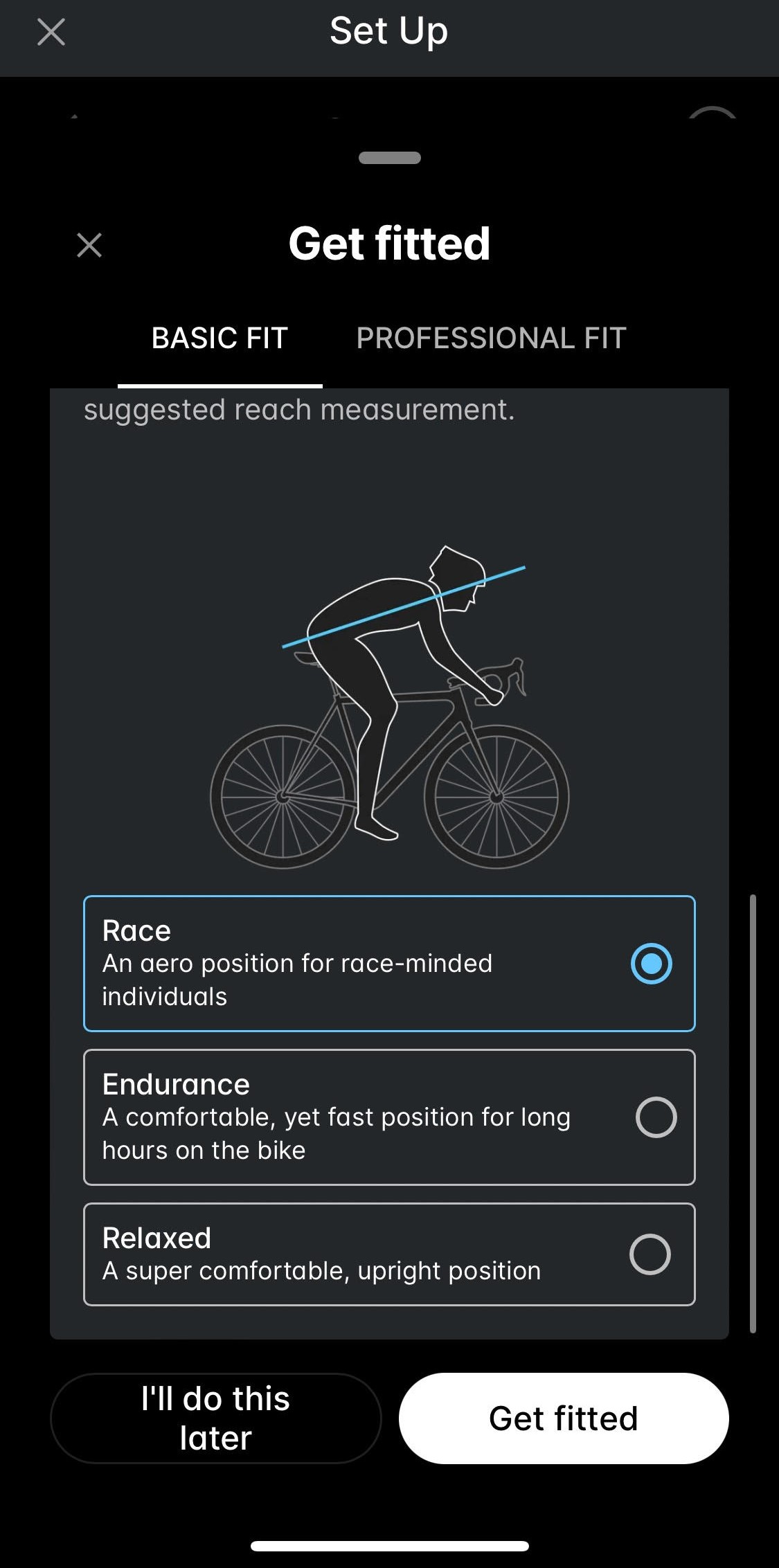
There is a handy bike setup and fit tool to use in the Wahoo app, to help you find a comfortable position. The Shift bike allows you to set up; stack, reach, setback, saddle height and standover height in what Wahoo calls the 'five points of adjustability fit'. It can throw up a few fit options once you provide your inseam length, you then choose from race, endurance and comfort positions. I ended up with a mix of race and endurance, but the app did spit out my usual seatpost height based on my inseam measurement which gave me confidence.
You can also input Retul, Guru and Trek bike fit measurements if you have a professional bike fit using one of those platforms and want to transfer it to the Kickr Shift. There is so much potential adjustability, the setup tool is really useful and helps negate a lot of potential toing and froing. The recommended adjustments are very easy to follow and set up thanks to the adjustments scales on the seatpost, bars, frame etc.
I have seen the Kickr Bikes being used as bike fit tools online and the ability to easily experiment with different crank lengths for instance using the multi-position crank arms does give users the option to experiment with different positions though this also could be a bit of a rabbit hole.
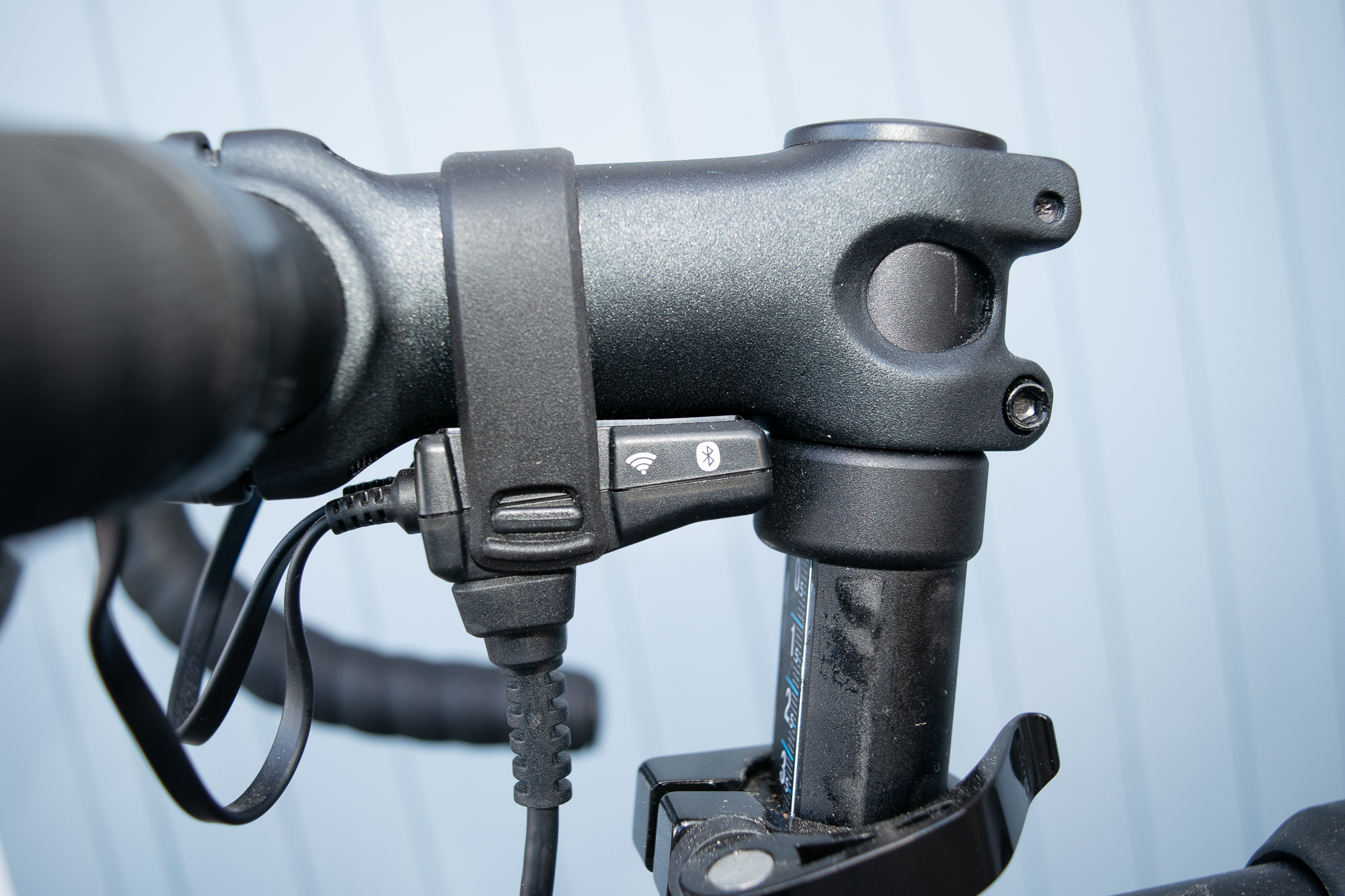
There were a couple of things I didn't like as much concerning the Kickr Shift's design. I wasn't blown away by the seatpost and quick-release seatpost clamp setup. This had to be done up very tightly using a hex key to prevent the post from slipping in use. In the same way, the insides of the brake levers are left a bit sharp and the finishing is slightly lower end, for the price I would expect a little better.
I also found the stock bars too wide, at 44cm outside to outside. It would be easy enough to swap the handlebars out for your preferred model thanks to its regular round shape, and I probably would do this if I were investing myself. The same goes for swapping to your preferred saddle. An adjustable width handlebar would be great to see to minimise post-purchase faff, but I appreciate this model is the more cost-effective option and a price point has had to be met. This point on the bars is more noticeable because the lack of adjustability there feels at odds with the wide range of adjustments the rest of the bike offers.
The cabling at the front end is pretty clean and there are only three visible wires to be mindful of. However, I have knocked the control unit pod magnet out once or twice when grabbing my towel off the bars which causes a drop-off in the shifter function and the connections of any paired apps and devices. It's those desperate depths of the pain cave snatches for the towel that will probably catch you out (you know the ones I mean) so factor this into your towel placement or potentially look at shoring up the connection.
I've not tested either version of the original Kickr Bike but have read and heard that the top tube of the previous unit was a little wide for some users and caused some irritation in use. The Kickr Shift was narrowed here, and the top tube profile hasn't been an issue for me.
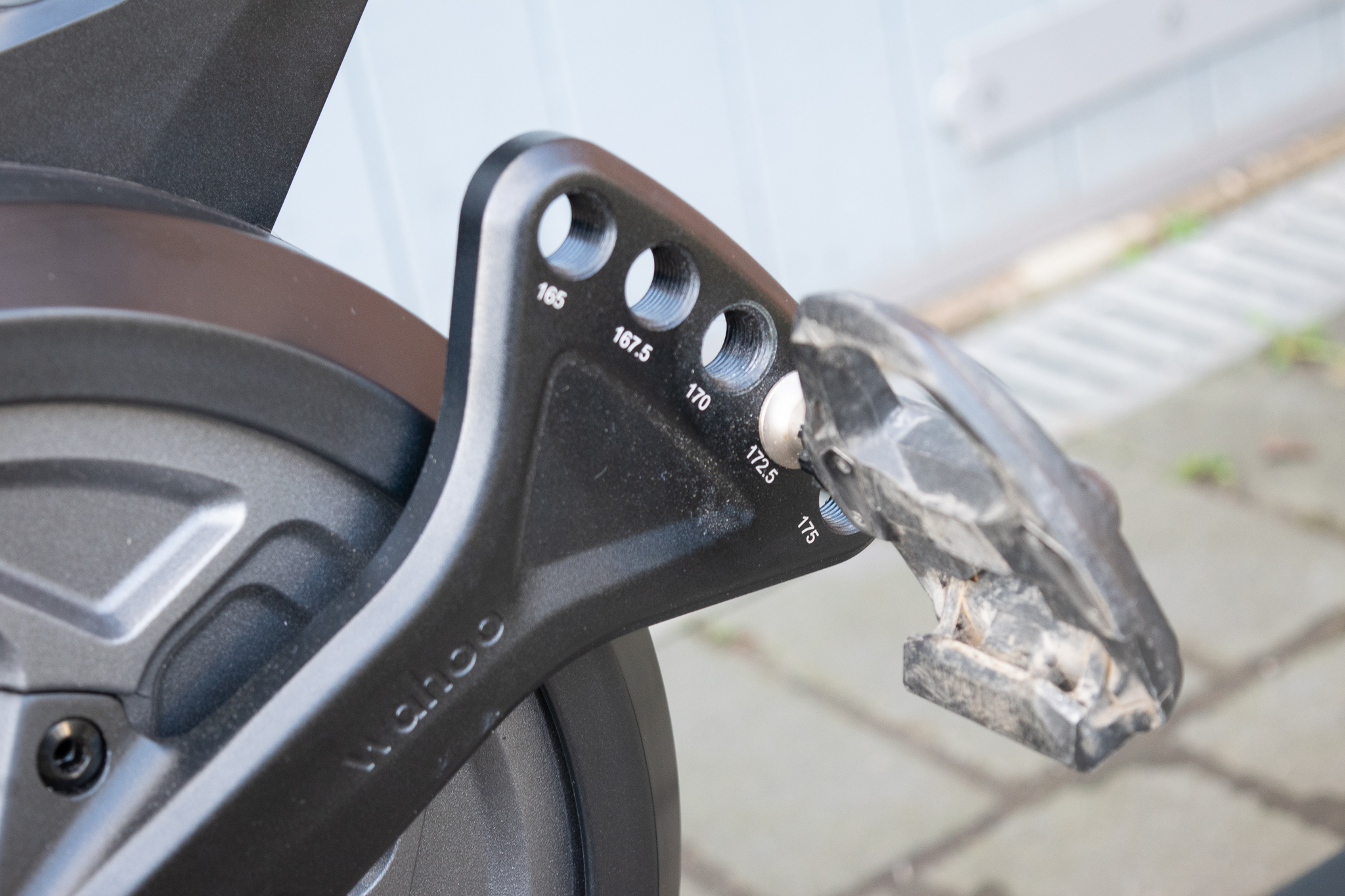
The Kickr Bike Shift makes some noise in use, but it is very quiet, I used an app on my phone to measure the decibel reading when cycling at around 200 watts and got a reading of about 60 decibels which mimics the Kickr V6 trainer, and according to a quick Google search is equivalent to a quiet office environment. Rest assured, it's really quiet and smooth.
The bike also has programmable virtual gearing and you can select the Shimano, SRAM or Campagnolo gear system and ratios you use out in the real world in the Wahoo app. I plumped for my own Shimano 36-52 / 11-28 setup and found this to be pretty good. There isn't a gear selector to show the gear choice on the bike's shifters or in a lot of training apps, but you get a good idea just from feel on where you are and the lack of an indicator just wasn't an issue. The setup felt particularly realistic for me when free riding on a long climb with some flatter ramps along the way, I found myself dropping down several sprockets in the little ring in the same way I would do outside when the gradient levelled off.
The Kickr Shift electronic shifter is comfortable to hold and is similar to SRAM's latest offerings in terms of shape I would say. Shifting itself is similar to a Shimano setup with two shift paddles on the outsides of each shifter. You can steer from left to right in apps like Zwift, though I found myself doing this rarely.
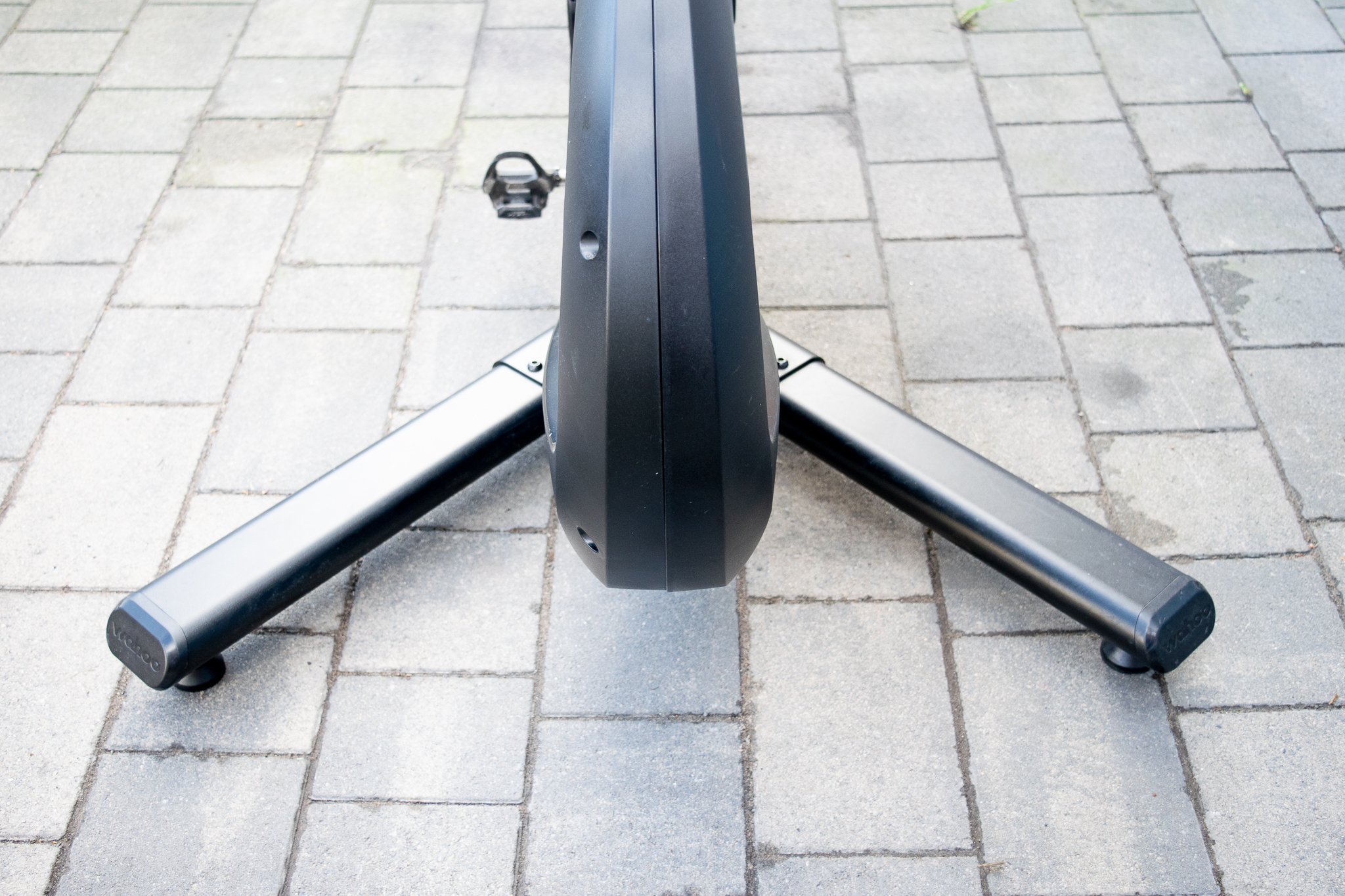
Power accuracy and ERG mode



I've spent time testing the Kickr Shift by riding in Zwift, MyWhoosh and TrainerRoad, I have done free ride sessions, and structured workouts using Erg Mode with power smoothing turned on and off. The Kickr Shift also features Wahoo's 'Easy Ramp' feature which allows for a gradual re-entry and ramping of power to your workout should you pause it.
Power changes in ERG mode are nice and smooth, certainly smoother and a little more gradual than the Zwift Hub One trainer I've also used lately, which has now been superseded by the new Wahoo Kickr Core Zwift One. Increasing power during ERG mode workouts is smooth and I've found it to be a gradual ramping up. Conversely, when feeling a little nailed after an effort, at times I found myself willing the power to go down a bit quicker to put me out of my misery.
In some short spikey efforts, with power smoothing turned off, I did experience a little lag and for a second thought the trainer would stall, almost like the days of old on a more basic wheel on the trainer, but it only took a second or two at most to smooth things out and help me get on top of the gear, I was also caught off guard by the effort somewhat and my lack of anticipation was partly to blame.
Overall though, across a variety of workouts, the Kickr Shift has felt smooth for me in ERG mode and has dealt with larger changes in wattage well.
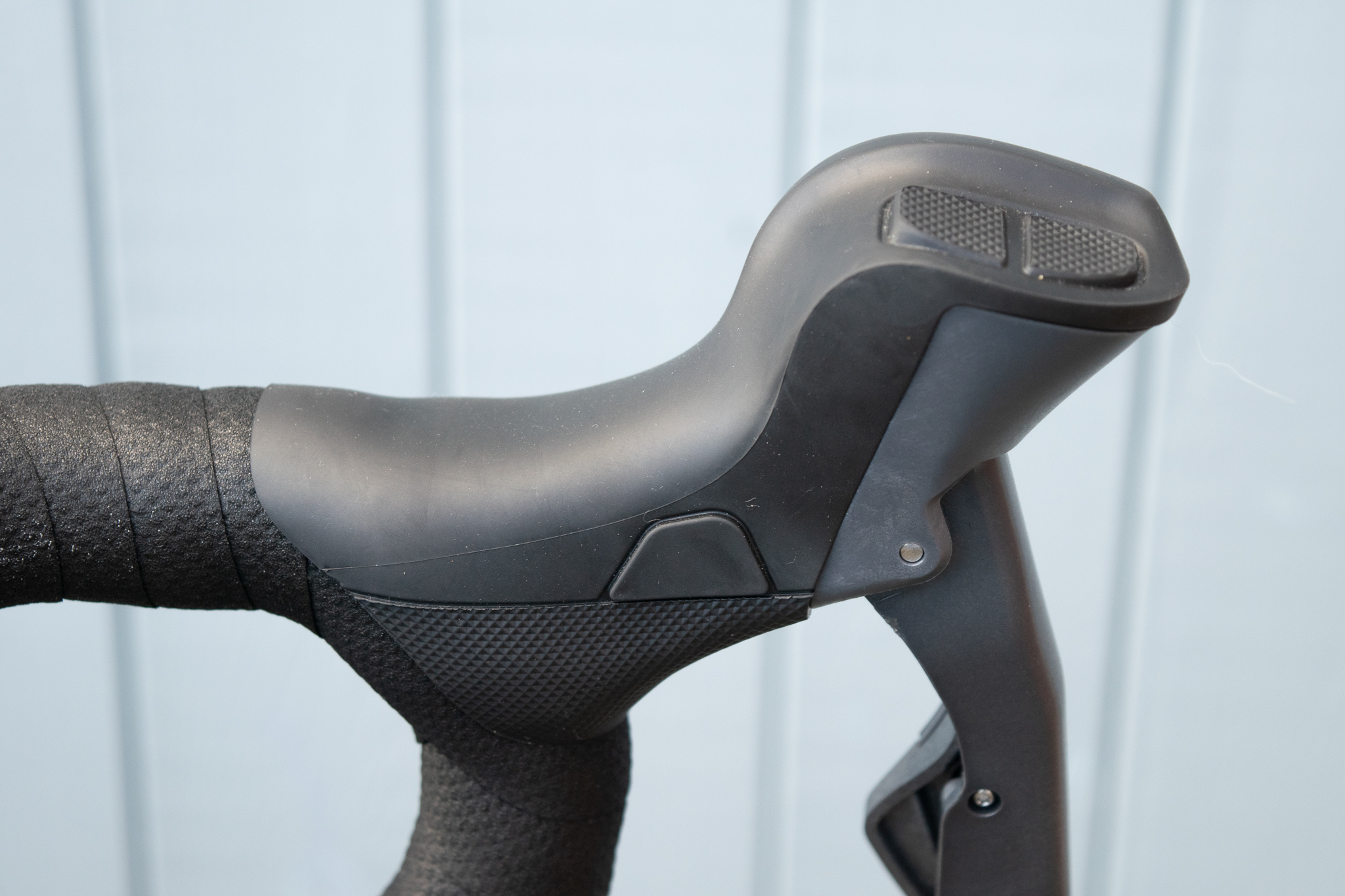
Verdict
I've enjoyed training on and using the Wahoo Kickr Bike Shift and haven't had any issues during my time with it. In use, it is smooth and quiet, It's also not going to give you any issues in the noise department.
It's highly adjustable, so achieving a comfortable position or replicating your real bike should be easy. Perhaps it goes without saying, but if you're doing a lot of hours or just want the bike to feel like home then swapping the saddle and bars out for your preferred ones will be easy to do.
I found the trainer feel during ERG mode workouts to be smooth and even and the virtual Shimano shifting worked very well. Very occasionally I felt a downshift meant a big drop but they somehow seemed to improve over time, or more likely I got used to the electronic shifts. The belt-driven drivetrain does feel a little different to a regular drivetrain feel but I got used to it quickly.
The Kickr Shift loses points for some of the finishing in places, and if you are investing then you may have to spend a bit more on a phone or tablet/laptop stand. (if you don't have one already)
Unless you really want to treat yourself to the top-end Kickr Bike with electronic gradient simulation, the Kickr Shift is going to make for a solid indoor training tool that offers a lot of the same features for less money.
